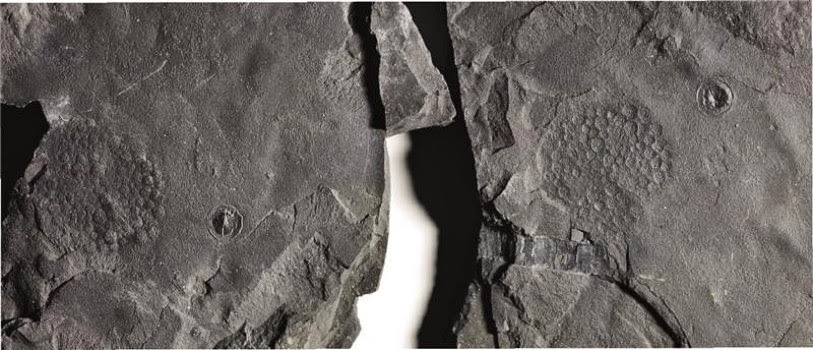
Researchers from the CNRS and the Université de Poitiers, working in collaboration with teams from the Université de Lille 1, Université de Rennes 1, the French National History Museum and Ifremer, have discovered, in clay sediments from Gabon, fossils of the oldest multicellular organisms ever found (Nature, 2010). In total, more than 400 fossils dating back 2.1 billion years have been collected, including dozens of new types. The detailed analysis of these finds, published on June 25, 2014 in PLoS One, reveals a broad biodiversity composed of micro and macroscopic organisms of highly varied size and shape that evolved in a marine ecosystem.
The discovery in 2010 of 250 fossils of complex multicellular organisms dating back 2.1 billion years in a sedimentary bed close to Franceville, in Gabon, drastically changed the scenario of the history of life on Earth. Until then, the oldest known fossils of complex organisms were 600 million years old (Vendobionta from Ediacara in Australia) and it was commonly accepted that, before that period, life on our planet was exclusively made up of unicellular organisms (bacteria, unicellular algae, etc.). With the Franceville discovery, complex life forms made a leap of 1.5 billion years back in time.
The excavations carried out since 2008 by the team of Professor Abderrazak El Albani, geologist at the Institut de chimie des milieux et matériaux in Poitiers (CNRS/Université de Poitiers), have uncovered 400 fossils. The organic origin (biogenicity) of the samples was confirmed using an ion probe to measure the different sulfur isotopes, while X-ray microtomography revealed their internal and external structures. The rapid fossilization of these individuals by the pyritization phenomenon (replacement of their organic matter by pyrite, brought about by bacterial action) conserved their original forms very well.
Several new morphotypes, e.g. circular, elongated, lobed, etc. have been catalogued by the researchers, each including individuals of different size. Their analyses reveal organisms with radial texture and soft gelatinous bodies. Their forms can be smooth or folded, their texture uniform or knobby and their material in one whole piece or partitioned. The highly organized structure and varied sizes of the macroscopic specimens (up to 17 centimeters) suggest an extremely sophisticated means of growth for the period. This complete marine ecosystem was therefore composed of micro and macroscopic organisms, extremely varied in shape and form, living in a shallow marine environment.
Like the biota* of Ediacara in Australia, whose emergence coincided with a sudden increase in oxygen levels in the atmosphere 800 million years ago, the appearance and diversity of the biota in Gabon corresponds to the first peak in oxygen observed between — 2.3 and — 2 billion years ago. This biodiversity apparently died out after this oxygen level suddenly fell. This Gabonese biota raises questions about the history of the biosphere at a planetary scale. The diversity and highly organized structure of the specimens studied suggest that they were already evolved. It is also possible that other forms of life just as old may exist elsewhere on the planet
This study was performed with the support of the Institut de Chimie des Milieux et des Matériaux de Poitiers (CNRS/Université de Poitiers), the Laboratoire Géosystèmes (CNRS/Université Lille 1), the Centre de Recherches Pétrographiques et Géochimiques (CNRS/Université de Lorraine), the Laboratoire Histoire Naturelle de l’Homme Préhistorique (MNHN/CNRS), the Institut de Minéralogie, de Physique des Matériaux et de Cosmochimie (CNRS/UMPC/MNHN/IRD), the Laboratoire de Géosciences de Rennes (CNRS/Université de Rennes 1) which is part of the Observatoire des Sciences de l’Univers de Rennes, the Laboratoire d’Hydrologie et de Géochimie, Strasbourg (CNRS/Université de Strasbourg), and the Ressources Physiques et Ecosystèmes de Fond de Mer department at the lnstitut Carnot Ifremer Edrome.
*A biota is a community of living organisms historically established in a particular geographic region.
Note : The above story is based on materials provided by CNRS.










